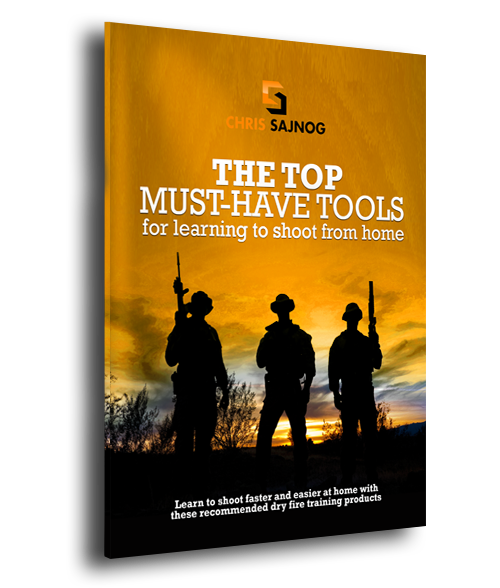Personal Medical Kit: Navy SEAL-Approved Gear
Hey, what’s up everybody, in this post, I’m going to be talking about the Personal Medical Kit and why it’s essential for your emergency preparedness. Let’s go ahead and get started.
As a Navy SEAL, you learn a wide variety of skill sets to make you a better tactical operator. Most people know that I was a Sniper instructor before I retired from the Teams in 2009, and I continue to hone my skills as a firearms and tactics instructor for Center Mass Group. What many don’t know is that I’m also a combat medic and attended the Special Operations Medical Sergeant Course (18D) in 1995 at Fort Sam Houston, TX (the training has since been moved to Ft Bragg, NC). Since that time I have also kept up my tactical medical skills by maintaining my Paramedic registration and helping teach an SOF paramedic refresher course at one of the few SOCOM-approved courses.
If you’re in the war-fighting community, you know (unfortunately) that medicine is usually the first block of training that gets dropped as schedules get tighter. To make sure that medical training stays on the schedule, I’ve found it best to inject it into any other training you’re doing. For instance, the units going through any CMG shooting course get some free medical training as part of the curriculum. Don’t ever train to be the tip of a spear, and expect to be cut sometimes.

Enough about You
With this in mind, I was happy when my friends over at ITS Tactical asked me to give them an honest review of their ETA kits. Since they’ve posted other gear reviews I’ve done in the past, they knew they would get honest feedback. They’ll be happy to hear I give the kit my stamp of approval, but with it comes some recommendations. If you have or plan to purchase any one of their tactical medical kits, I’ve also made some recommendations on how to prepare your personalized medical kit for emergency use. I’ll be reviewing the kit they sent: the ETA Tallboy Kit (MIL/LE) version with the Tallboy Trauma Kit Pouch and make a few points on the SOFTT-W.
What They Say
ITS Tactical developed the kit by following the TCCC Guidelines to treat the three leading preventable causes of death in the field: extremity hemorrhage, tension pneumothorax, and airway obstruction. The Tallboy configuration is their Fatboy redesigned with input from Haley Strategic and Zulu Nylon Gear to take up less precious real estate and fit into a double magazine pouch. The pouch will hold the Vacuum Sealed Tallboy ETA Trauma Kit as well as the contents of the kit if the end user needs to break the seal or wants faster access to individual components. It can be secured to your gear vertically or horizontally with included long or short MALICE Clips or optional Molly Stix.
With a simple pull on the handle, the pouch quickly opens to provide immediate access to the components. The small 1″ section of red Velcro affixed to the handle can be removed for a lower profile. (I think a reduced signature would be better than a lower profile.) The main pocket provides space to fit the Vacuum Sealed Tallboy ETA Trauma Kit or other medical items. The two wing pockets are large enough to store Decompression Needles and NPAs, or other Airway devices. The flap panel design allows you to custom configure the shock cord loops to hold whatever you need it to.
Contents (From Website)
- QuikClot Combat Gauze LE (1)
- HALO Chest Seal (2)
- MojoDart Decompression Needle (1)
- Nasopharyngeal Airway (NPA) Adj. 28fr (1)
- Pressure Dressing (1 – 4″) *Should say, 4” Pressure Dressing (1)
- Elastic Bandage (1 – 2″)* Should say, 2” Elastic Bandage (1)
- Z-Fold Dressing (1)
- Combat Casualty Card (1)
- Nitrile Gloves (1 Pair)
- Lubricating Jelly (1)
- Pencil (1)
- Contents List w/ TCCC Care Under Fire Instructions (on reverse) (1)
Each ETA Kit is hand-assembled in the USA (Bonus Points) and has an expiration date of at least three years.
What I Found
I don’t care if reviewing gear is your full-time job, when you get new gear in the mail, it’s like Christmas! I opened up my brown and clear tape-wrapped present to find:
ETA Kit: ITS-MED-003 (MIL/LE)
Vacuum sealed with an expiration date of 2/16.
Right off the bat, I can say the quality of the vacuum seal packaging is very high. In the teams, we’ve tried using industrial “Seal-a-Meal” machines without much success. The bags that are commercially available are not thick enough to last during combat training or operations and would often leak during maritime or diving operations. It doesn’t take a medic to know that this is not good! I spent a day with it in my kit and tried to bang it around as much as I could, and it held up great. The next thing I needed to do was open it up…
Personalized Medical Kit Contents:
- QuikClot Combat Gauze (X-ray), 3” x 4 yards
- Combat Medical Systems, Decompression Needle, Mojo Dart, 14GA, 3.25” with an expiration date of 04/15
- Nasopharyngeal Airway, 28fr w/packet of lube
- Tytek Medical, EZ Gauze TM-215. Sterile (Z-Fold Dressing)
- Nitrite Gloves, Purple, Large (Unknown thickness/mils)
- PMI HALO SEALS, 2-pack with use before date of 12/15
- Dynarex, 2” Elastic Bandage
- 4” Israeli Emergency Dressing (Pressure dressing)
- Combat casualty card with a rubber band for attachment and pencil
- Bonus: TCCC, Care under Fire directions on the back of the contents list
The first thing I noticed upon opening and inventorying the personalized medical kit was the difference in the expiration date on the outside of the pack and the expiration dates on the items inside that pack. The pack was labeled with an expiration date of 2/16, while the Mojo dart expires on 4/15 and the HALOs on 12/15.
I contacted ITS about this and they were setting expiration dates by how we (18D medics) use our gear: It’s good to be at least one year past the printed dates. Although I have 20+ years of experience saying this is true, I thought it would be better for the customers to make that decision — and they totally agreed. In the future, the expiration date on the outside of the pack will be equal to the item that will expire first.
I liked that they had the TCCC: Care Under Fire directions on the back of the contents card, but I do wonder if that’s the best place for them? I’d hate for someone to be reading notes in a gunfight…1. Return fire and take cover… I think it might be better to have a rapid trauma assessment such as

MARCH
M– Massive Bleeding
A – Airway
R – Respirations
C – Circulation
H – Head
Or the one I used in the teams:
BATS
B – Bleeding
A – Airway
T – Tension pneumothorax
S – Shock
You could even make up your own (like I just did):
SEALS©
S – Stop massive bleeding; seal and treat…
E – Entry/Exit wounds on the thorax; make sure the…
A – Airway is open; check…
L – Level of consciousness; treat for…
S – Shock
Nice Sack! (Did I just say that out loud?)

This personal medical kit is very well thought out and as I stated earlier, the vacuum seal bag is awesome. In fact, the vacuum seal bag and HALO wrapper can be used as additional occlusive dressings (don’t waste anything!).
A few minor negatives: Not digging the one long piece of shock cord. Maybe I couldn’t figure out a good way to keep the items in, but on testing when I pull one item out, the rest either comes with it or spins around making it hard to zip back up. I would recommend some thin elastic loops or elastic Velcro sewn onto the flap. You also need to be careful zipping up the bag so that the plastic wrapping does not get caught. A few times I had it get stuck when I pulled the quick-rip handle. This is easily avoided by making sure you don’t get any plastic in the zipper when you prep your bag.
As for those expiration dates, the choice to use medical gear past the manufacturer-recommended dates is a choice you will have to make. We did it in the teams my whole career, normally up to a year past the date, but it mostly depends on storage and handling. For non-drug items, the main reason for having an expiration date is sterility or usability.
The items in this personalized medical kit all come down to glue, which is tested for the worst possible environment and the first possible failure. In the HALO it’s the degradation of the glue on occlusive dressing. On the decompression needle, it’s the glue on the sealing band around the case, which keeps the needle sterile. So if you’re not climbing around in the desert for three years straight, your kit will likely last longer than if you are…again, YOU make that choice.
Nothing a Little Duct Tape Can’t Fix
Trust me on this one: When your hands are full of blood, it’s not easy to tear the little cut tabs on bandages. The fix: Buddy tab and Label everything! Like anything else, you need to prepare for battle to find victory on the other side. Get lady luck on your side by doing everything you can to make your personalized medical kit battle-ready. If you expect to get wet, keep your gear in the well-made, sealed pouch. If you’re not using a medical pouch or you really need to conserve space, keep it in a sealed bag. If these things aren’t a concern, get them out and ready for use.




If you are going to keep it in the vacuum-sealed bag, be a buddy…


By taping the lube to the pouch, it’s easy to find and self-opening upon grabbing.

The SOFTT-W
This is a great tourniquet, but I would not recommend attaching any tourniquet to anything with the small rubber bands provided. I used some of the extra shock cord from the pouch, which will hold up much better in combat. Now, if you’re only wearing your kit from your car to the range, you might be ok. I would also keep it near the center of your chest (if possible) where you can access it with both hands.


Alright, so that is it for today. I hope you got some value out of these Personal Medical Kit insights and are now better equipped for any unforeseen situations. Tactical medicine is second only to tactical shooting for me, so if you have any questions or comments, please let me know below. Stay Safe!




